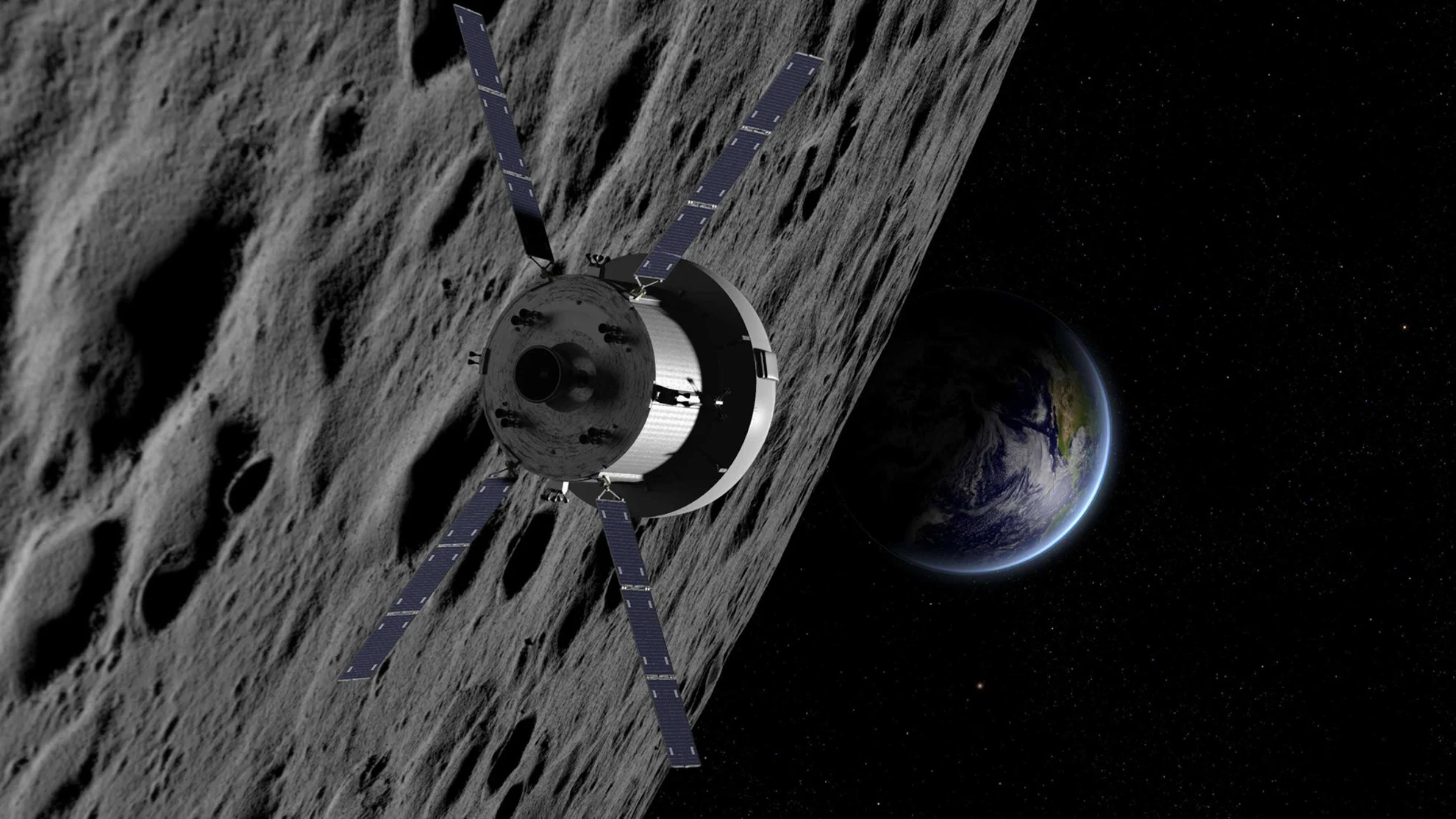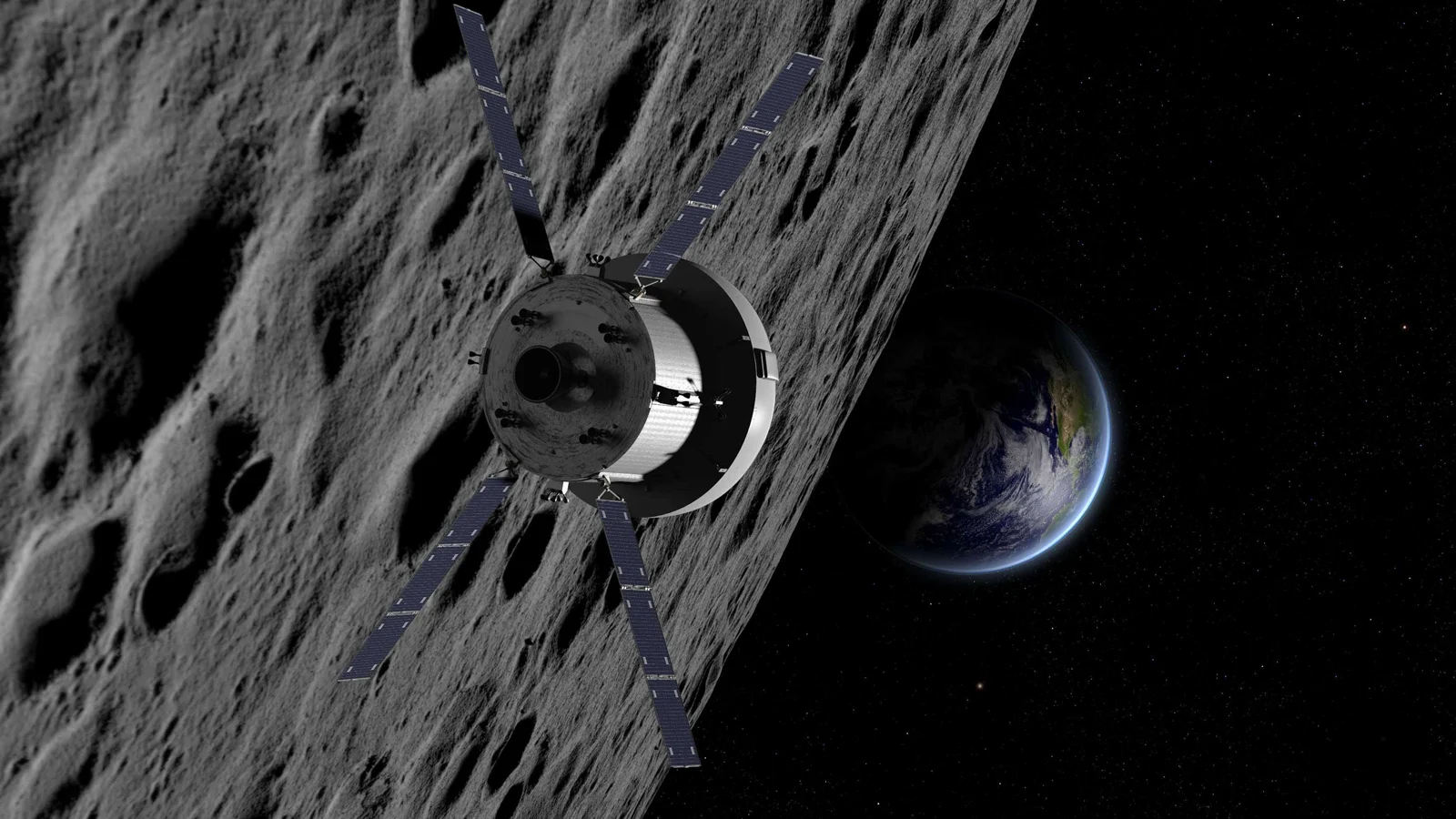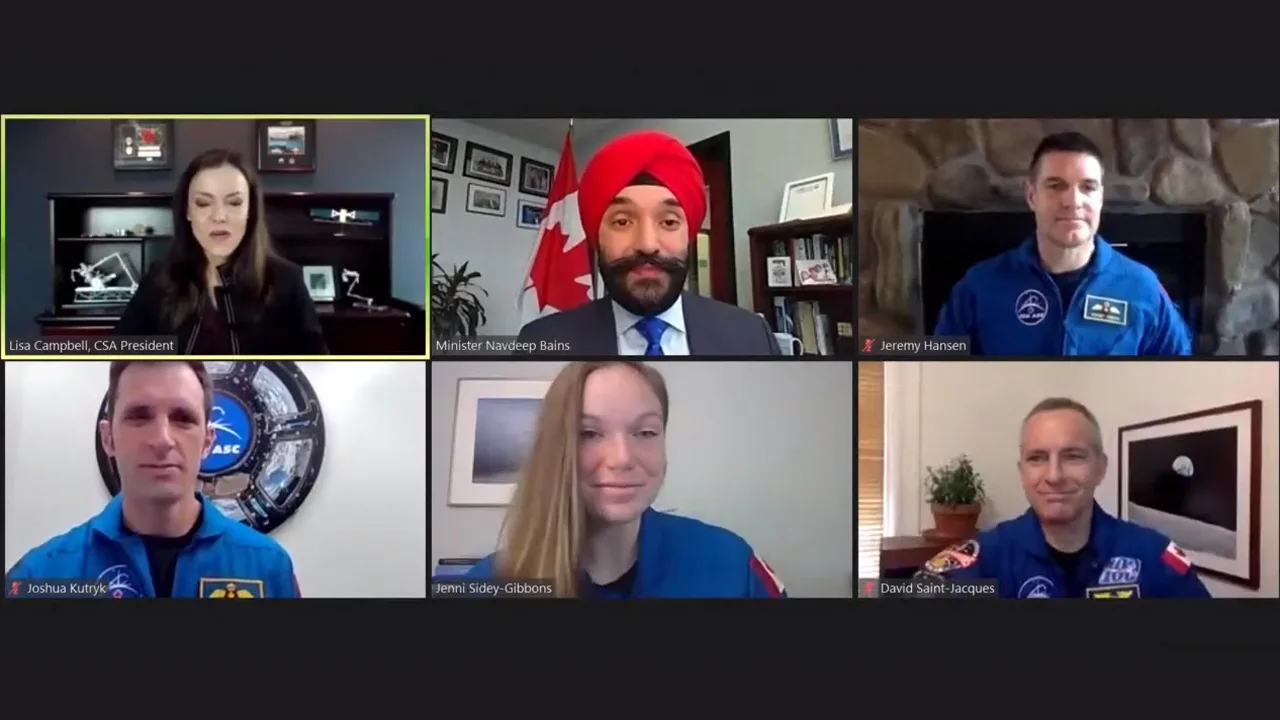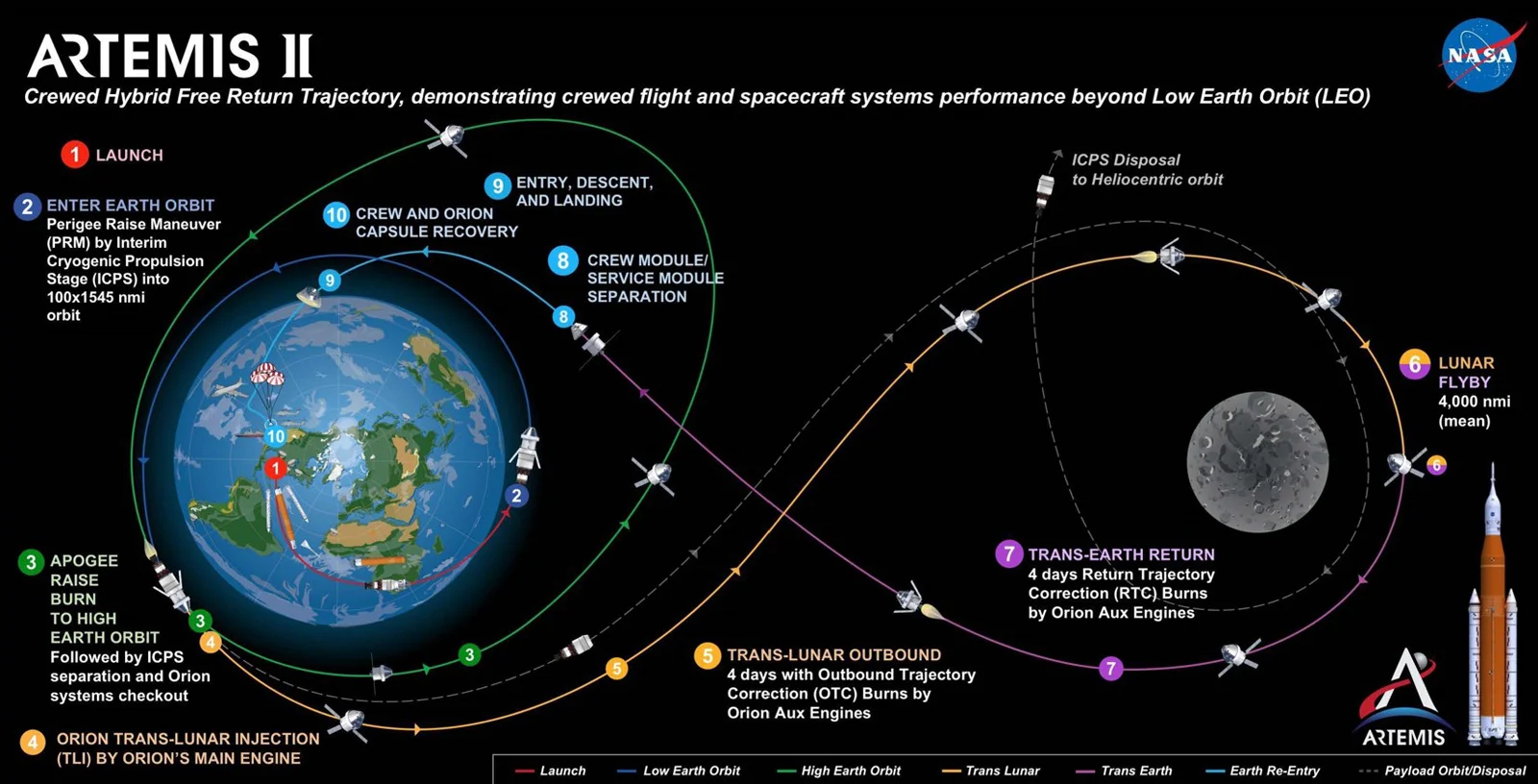
A Canadian astronaut will be on the first crewed Artemis flight around the Moon
One of Canada's four active astronauts will be part of this historic mission planned for 2023.
On Wednesday morning, it was announced that one Canadian astronaut will have an integral part in NASA's first crewed flight to the Moon in nearly 50 years.
December 16, 1972, was the last time that humans orbited the Moon, during NASA's Apollo 17 mission. So, today was a fitting day for the Canadian Space Agency to make a major announcement about our nation's contribution to the Artemis program — the next attempt to send humans to the Moon.

This simulation shows the Orion spacecraft circling around the Moon, with Earth coming into view. Credit: NASA
CSA President Lisa Campbell and Minister Navdeep Bains announced that due to Canada's contribution of a new robotic Canadarm3 to the proposed Lunar Gateway Station, one Canadian astronaut will be included in the Artemis II mission. While Artemis I will be an uncrewed test flight, scheduled for sometime in 2022, Artemis II will be the first crewed flight in 2023.
"All eyes will look to the sky as one of our astronauts becomes the first Canadian to travel around the moon," Bains said during the announcement. "Canada will join the U.S. on the first crewed mission to the Moon since the Apollo missions. This will make Canada only the second country after the U.S. to have an astronaut in deep space."
Also present on the live-streamed teleconference were CSA astronauts David Saint-Jacques, Jeremy Hansen, Jenni Sidey-Gibbons, and Joshua Kutryk.

Credit: CSA
"With today's announcement, I think of the Apollo 8 image... Earth as seen from the Moon's orbit," Bains said. "As a Canadian, that fills me with pride. To think that the next time we see our home planet rising up over the edge of the Moon, one of you four will be behind the camera."
While the ultimate goal of NASA's Artemis program is to return a human presence to the surface of the Moon, for the first time since 1972, that is not expected to take place until the third Artemis flight.
Artemis II, the first crewed flight, will be very similar to the Apollo 8 mission in 1968. Launching from Kennedy Space Center atop a new Space Launch System (SLS) rocket into low-Earth orbit, the crew will then pilot the Orion spacecraft on a four-day flight to the Moon. Swinging around the Moon's far side, they will then fly the four days back to Earth, where the capsule will splash down in the Pacific Ocean.

The Artemis II flight plan. Credit: NASA
"I feel that there is a growing interest in space around the world. More and more countries are trying to go further in space and carry out missions that are increasingly audacious," Campell said through a translater during the teleconference.
"I think that space can contribute tremendously to the economy of our country by creating jobs for the future and pushing the boundaries of science for the betterment of Canadians and people around the world," Campell added. "It's an important day for the Canadian Space Program. It's a day to celebrate."











